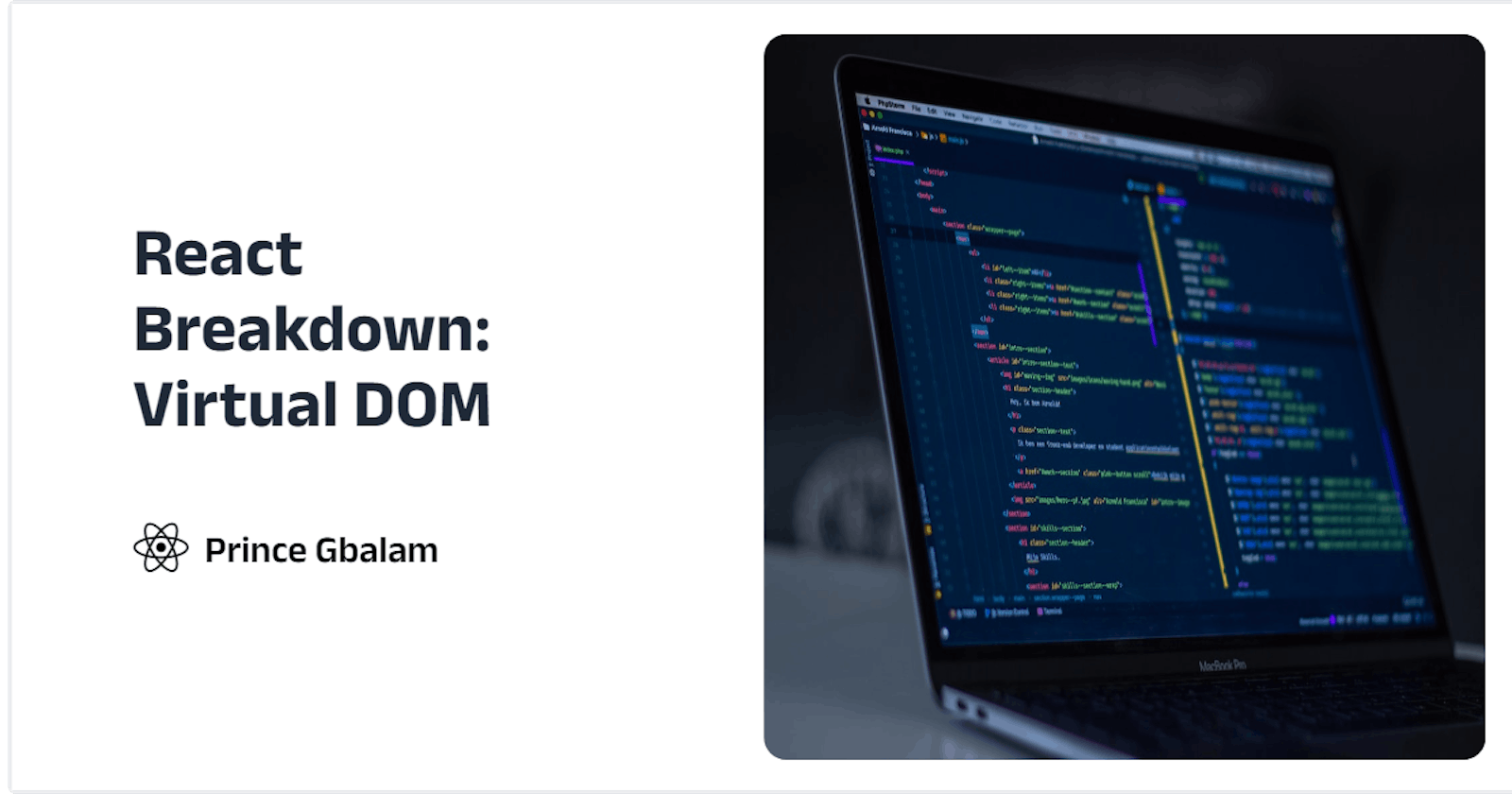Table of contents
In this article, we will explore the virtual DOM, a key concept in the React JavaScript library. We will explain what the virtual DOM is, how it works, and why it is an important part of React. By the end of this article, you will have a better understanding of the virtual DOM and how it fits into the broader React ecosystem. Whether you are new to React or have been using it for a while, this article will provide valuable insights into one of React's most essential features. Let's dive in!

What is React?
React is a JavaScript library for building user interfaces. It is maintained by Facebook, and a community of individual developers and corporations. React allows developers to create reusable UI components, which can help them save time and build user interfaces more efficiently. It is known for being declarative, efficient, and flexible, making it a popular choice for building modern web applications.
How does it work?
React uses a virtual DOM (Document Object Model) to render and update the user interface of a web application. The virtual DOM is a lightweight, in-memory representation of the actual DOM, which is the structure of the HTML elements in the browser. When the state of a React component changes, React updates the virtual DOM to reflect the new state. Then, it uses a fast, efficient algorithm to determine the minimal set of changes that need to be made to the real DOM, and applies those changes efficiently.
Have you ever played with a toy puppet? You know, the ones where you can move the arms and legs to make it look like the puppet is dancing or walking? Well, the virtual DOM in React works kind of like that.
Imagine that the toy puppet is a website, and each of its parts (arms, legs, head, etc.) is a part of the website (like a button or a picture). The virtual DOM is like a special person who controls the toy puppet. Every time you want to make a change to the website, like moving a button to a different spot or changing the color of a picture, the special person has to move the puppet's parts around to make it look the way you want.
But here's the thing: the special person is really fast! She can move the puppet's parts around really quickly, so even if you want to make a lot of changes to the website all at once, it will still look smooth and seamless to visitors.
That's how the virtual DOM works in React. It's like a special person who can quickly make changes to a website so that it always looks just the way you want it to. And that's why it's so useful for building fast and efficient websites!
Advantages of React
React only updates the parts of the user interface that have changed, it can improve performance and make applications feel more responsive. Yes, I know what you're thinking, when using traditional HTML and JavaScript, only the parts of the user interface that have changed are updated. However, this is not always done most efficiently, and it can be difficult for developers to manage the process of updating the user interface manually. The virtual DOM approach used by React makes it easier for developers to manage the updating process.
React allows developers to create reusable components, which can make it easier for them to build complex user interfaces. This can save time and help ensure that the code is more maintainable.
React uses a declarative approach, which can make it easier for developers to understand and debug their code.
Conclusion
The virtual DOM is a key concept in the React JavaScript library. It is a lightweight, in-memory representation of the actual DOM, and allows React to efficiently update the user interface of a web application when its state changes. The virtual DOM, along with React's other features such as the ability to create reusable components and its declarative approach, makes it a powerful tool for building modern web applications.
